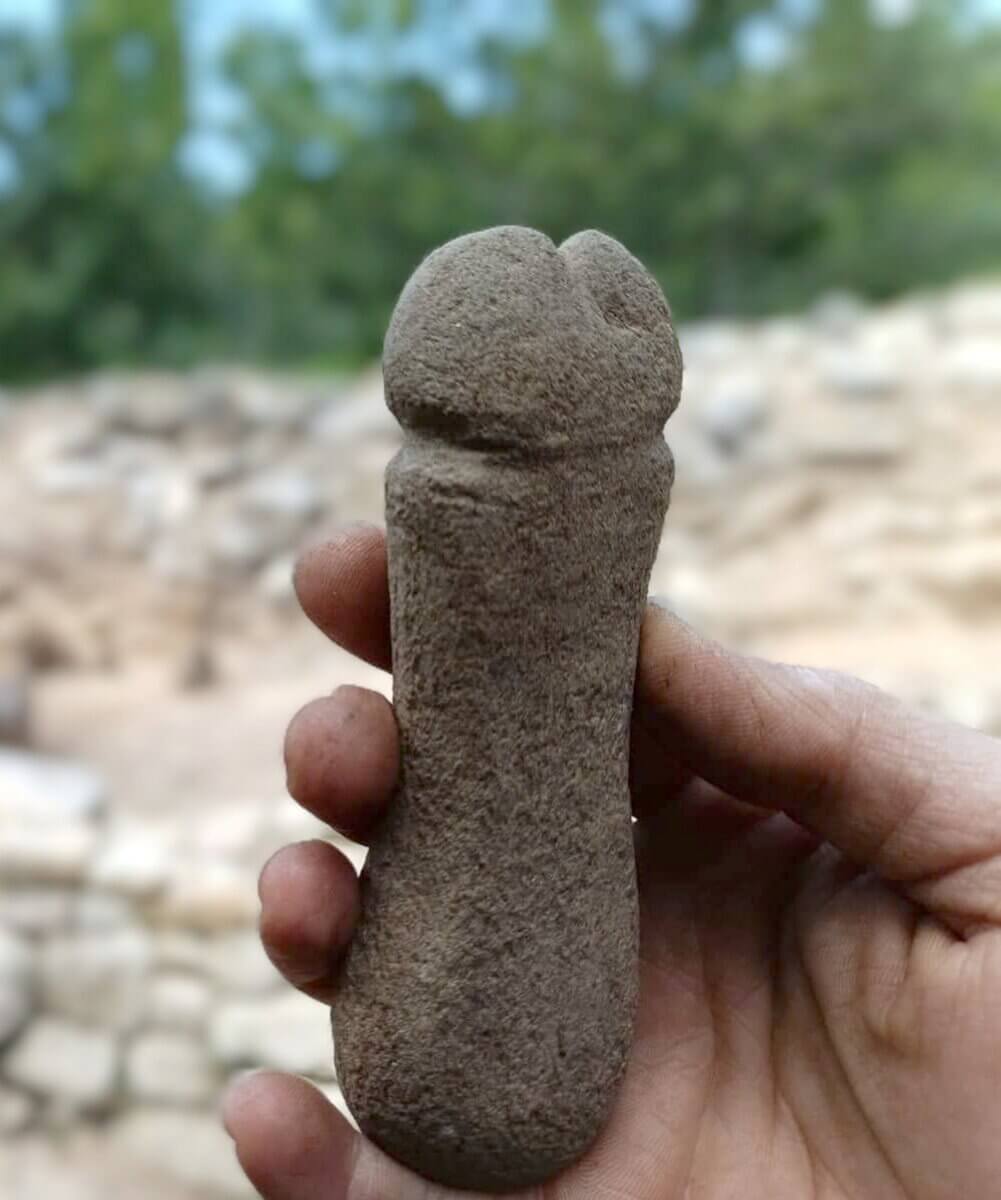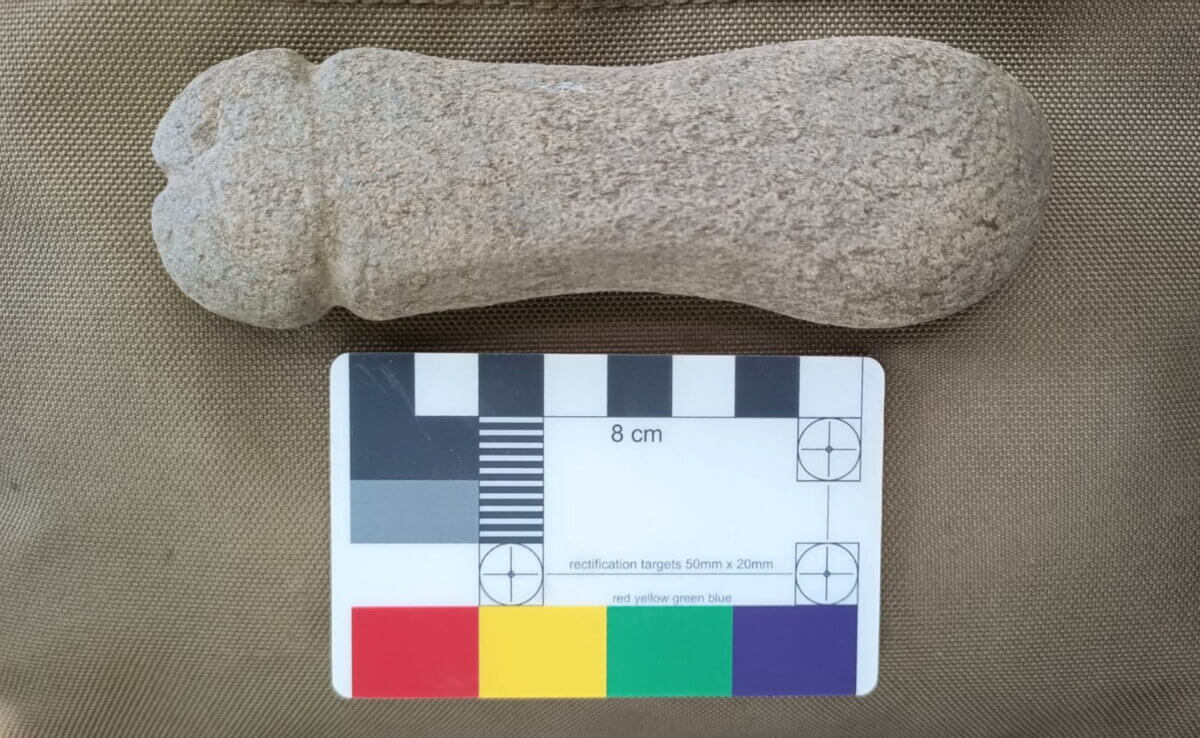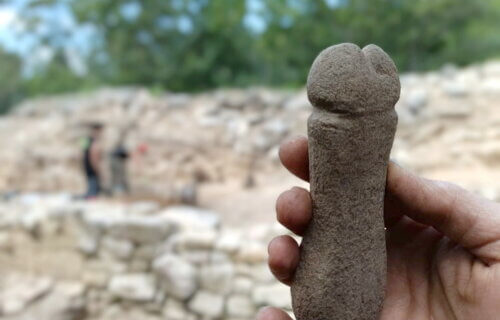GALICIA, Spain — Archaeologists are expressing their excitement after unearthing an ancient, six-inch stone phallus — and no, it probably wasn’t used the way you might be thinking. A team made the unexpected find during excavations at a medieval fortress in southwest Spain. According to researchers, while modern society almost exclusively sexualizes these objects today, this phallus likely had a much different purpose and symbolism 500 years ago.
The aim of the dig has been to uncover the purpose of a large structure erected inside the courtyard of the Meira tower in the Ría de Vigo, Galicia. This area is noted for its high population density and significant economic activity, which have resulted in a notable number of archaeological sites.
However, the Arbore S.Coop.Galega archaeological team considers the most striking discovery at the fortress to be this stone penis. Two archaeologists found the rock-hard tool in one of the tower’s destroyed levels. The team postulates that this “strange find” might have actually been a sharpening stone, possibly for honing weapons.
The medieval Tower of Meira, dating back to the 14th century, was entirely demolished in 1476, following the “Hirmandiña Revolt” from 1467 to 1469. This was a significant uprising against the nobility that led to the destruction of a large portion of the castles in Galicia.

“We can find this type of representation already in the most ancient prehistory, but they are not common in medieval contexts,” a spokesperson for Arbore Arqueoloxía explains, according to a statement from SWNS.
“The meaning varies in each culture and depends on the context. Far from being an offensive or obscene element, in Roman times these representations did not have the exclusively erotic connotation that some currently erroneously attribute to them,” the archaeological spokesperson continues.

“The phallus was an object of veneration and was given a magical-religious cult. The phallic symbol is represented on lamps, masks, pendants and rings, walls of houses, pavement of a street, corners, balconies, doors, baths or walls. Always preserving its character as a collective protector from potential evils and dangers.”
“The site where it was found was destroyed after an assault during a revolt against the nobility. This context can help us interpret this strange find,” the spokesperson adds. “It materializes since the symbolic association between masculinity, violence and weapons. It is present in different cultures and throughout time, even reaching our days.”
“A more detailed analysis of the material and traces of use of the object allows us to interpret it as a sharpening stone, possibly for sharpening weapons.”
The Arbore S.Coop.Galega excavation team is now investigating the function of Torre de Meira and have one important question: “Are we excavating a simple watchtower or was it really a small castle with permanent occupation?”
The Romans had phallus-shaped objects too
As the spokesperson for Arbore Arqueoloxía notes, the phallic symbol was a common scene during the time of the ancient Romans. A recent study identified what looks to be the first ever known example of a disembodied phallus made of wood recovered anywhere in the Ancient Roman world.
Unlike the stone penis that may have sharpened ancient swords and knives, the wooden phallus analyzed by researchers at Newcastle University and University College Dublin may have served a decidedly more sensual role. That team’s analysis revealed that both ends of the phallus, first discovered at Vindolanda in 1992, were noticeably smoother, which is indicative of repeated contact over time.

“The size of the phallus and the fact that it was carved from wood raises a number of questions to its use in antiquity. We cannot be certain of its intended use, in contrast to most other phallic objects that make symbolic use of that shape for a clear function, like a good luck charm. We know that the ancient Romans and Greeks used sexual implements – this object from Vindolanda could be an example of one,” says Dr. Rob Collins, Senior Lecturer, Archaeology, Newcastle University, in a statement.
South West News Service writer Dean Murray contributed to this report.


Gentlemen, In 1978, while hiking down the river bed of the Rio Guabo in Panama, I found a ston e phallus almost identical to yours. Identical in size and shape but without the slight concavities on the sides of the phallus. This area also has indigenous peooples going back hundreds of years.
Don’t y’all know what that thing was for? I’ll tell y’all just what these folks did with this hideous display of human ingenuity…. Here goes, they used that for their Christmas snowman display, each Christmas all the townsfolk affixed it to their snowman and afterwards would all make a huge multi-ringed circle and sing “who hung the dick on the snowman”
Maybe folks weren’t as stodgy as you’d like to lead your readers to believe, ‘back then’, and it is indeed what we think that it may be…a stone dildo. Maybe.
“rock hard tool” made me laugh aloud.
Me, too.